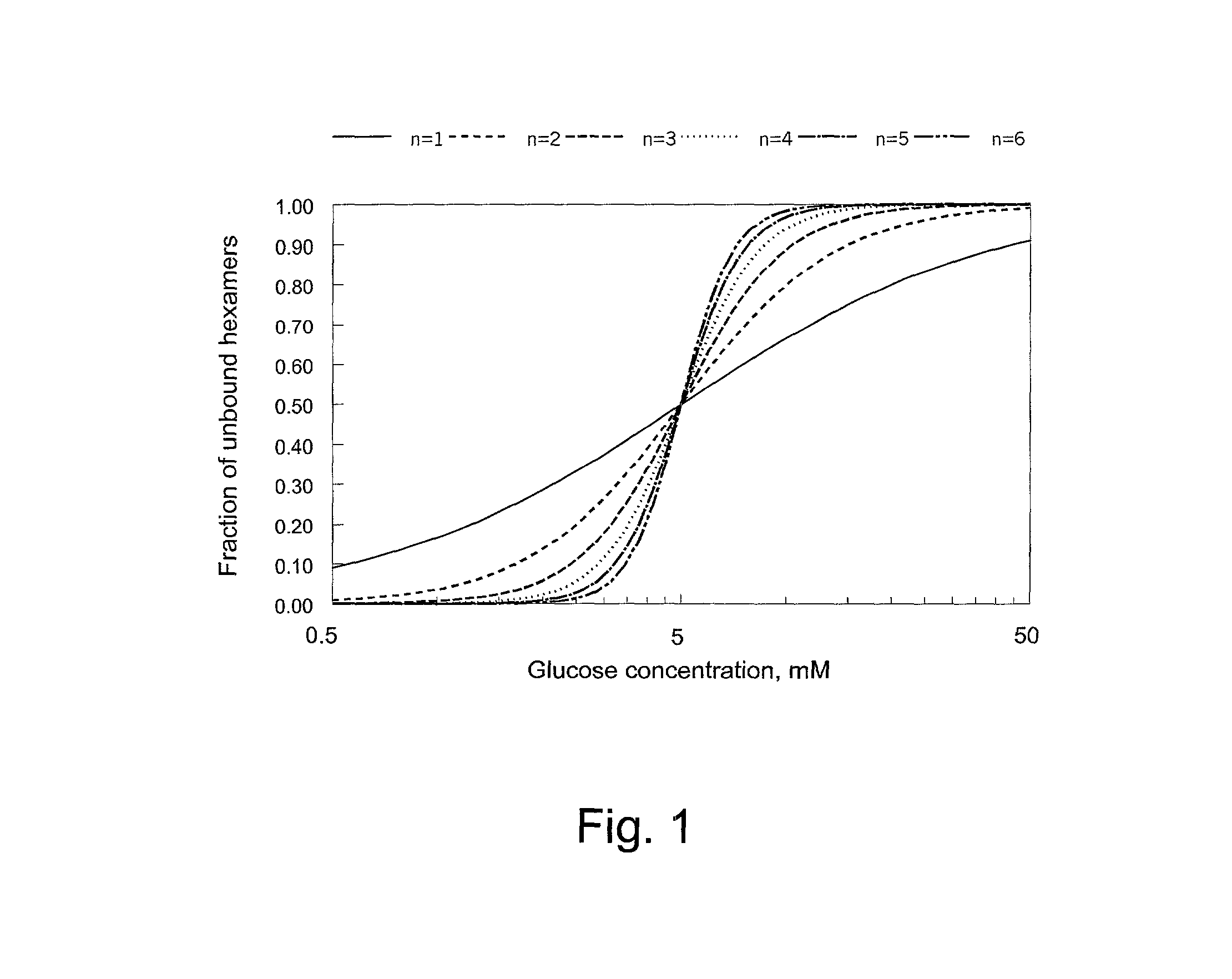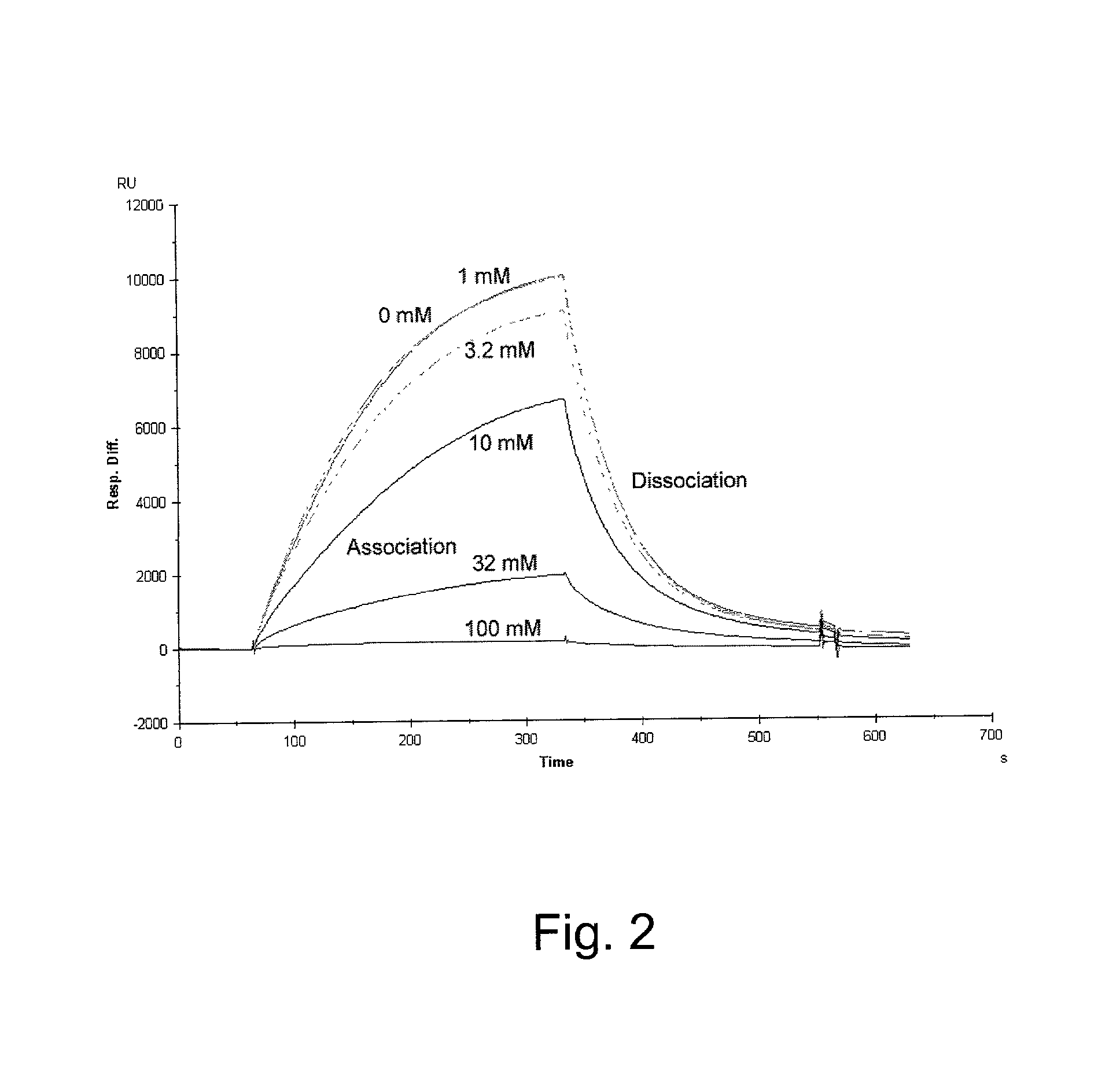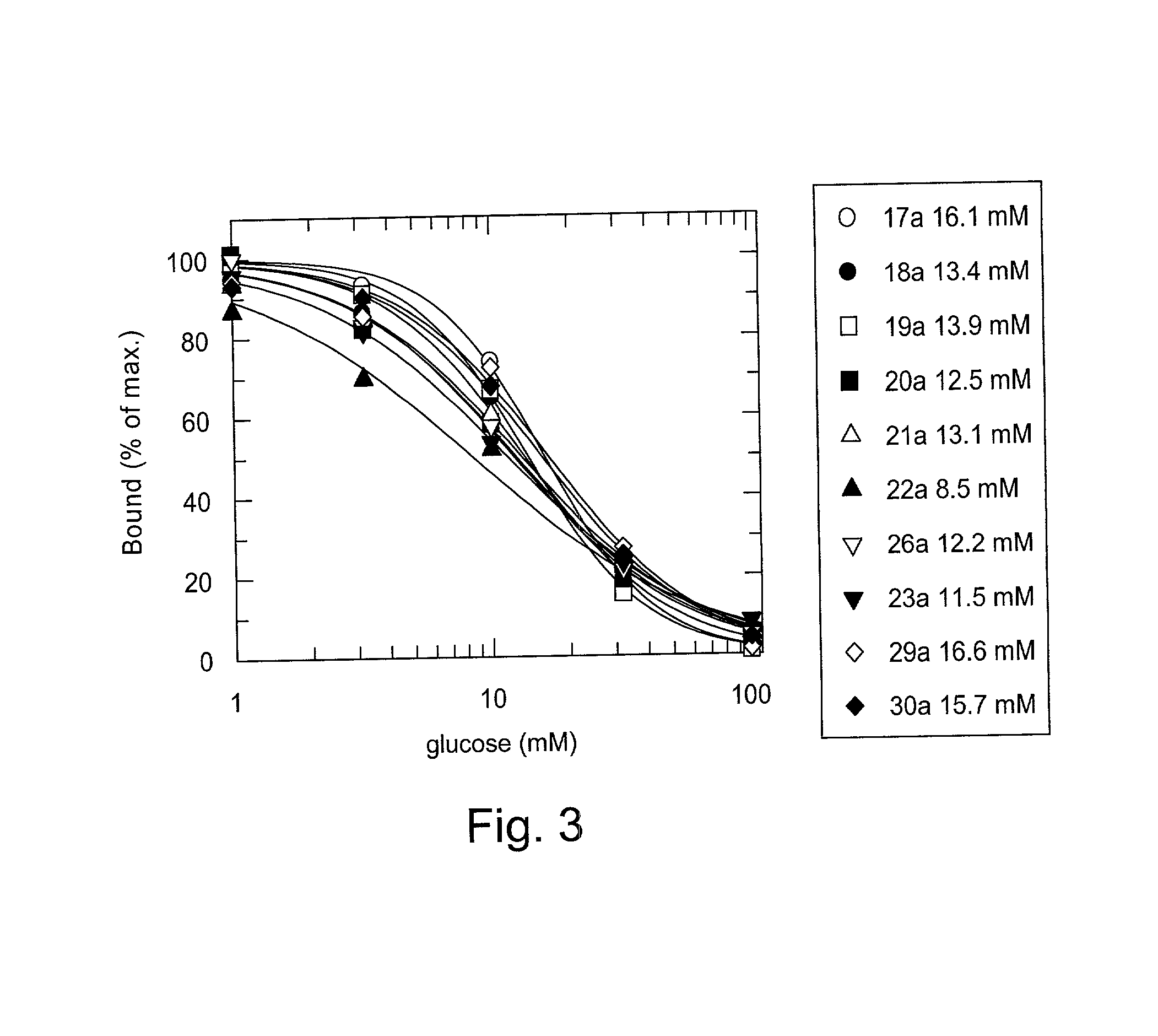Glucose dependent release of insulin from glucose sensing insulin derivatives
a technology of glucose sensing insulin and glucose-dependent release, which is applied in the field of insulin derivatives, can solve the problems of high molecular aggregates, disintegration and small aggregates formed from selected insulin derivatives, and achieve the effect of increasing the release of insulin derivatives
- Summary
- Abstract
- Description
- Claims
- Application Information
AI Technical Summary
Benefits of technology
Problems solved by technology
Method used
Image
Examples
example 1
LysB29(Nε-lithocholoyl)-N-phenyl-B29-benzylamide-2-boronic acid des(B30) human insulin, 1
[0084]2,2-Dimethylpropane-1,3-diyl-2-(bromomethyl)phenylboronate (Bielecki, Eggert and Norrild, J. Chem. Soc. Perkin Trans 2, 1999, 449) was reacted with aniline to give N-phenyl-benzylamine-2-(2,2-dimethylpropane-1,3-diyl)boronate. This amine was coupled to the carboxylic acid group of LysB29 in des(B30) human insulin using achromobacter lyticus protease (Morihara and Ueno, Biotech. Bioeng. 1991, 37, 693). Subsequently, the ε-amino group of LysB29 was acylated selectively using N-hydroxysuccinimidyl lithocholate (U.S. Pat. No. 5,646,242) to give structure 1.
[0085]
[0086]Using the above procedure, related compounds can be obtained by substituting N-hydroxysuccinimidyl lithocholate with another N-hydroxysuccinimidyl ester of an acid having a lipophilic acid residue, for example hyocholic acid, hyodeoxycholic acid or chenodeoxycholic acid.
example 2
LysB29(Nε-lithocholoyl)-N′-methyl-N′-(benzyl-2-boronic acid)-2-amino-N-phenyl-B29-ethylamide des(B30) human insulin, 2
[0087]2,2-Dimethylpropane-1,3-diyl-2-(bromomethyl)phenylboronate (Bielecki, Eggert and Norrild, J. Chem. Soc. Perkin Trans 2, 1999, 449) was reacted with N′-phenyl-N-methylethylendiamine to give N′-phenyl-N-methyl-N-benzyl-2-(2,2-dimethylpropane-1,3-diyl)boronate ethylenediamine. This amine was coupled to the carboxylic acid group of LysB29 in des(B30) human insulin using achromobacter lyticus protease (Morihara and Ueno, Biotech. Bioeng. 1991, 37, 693). Subsequently, the ε-amino group of LysB29 was acylated selectively using N-hydroxysuccinimidyl lithocholate (U.S. Pat. No. 5,646,242) to give structure 2.
[0088]
[0089]Using the above procedure, related compounds can be obtained by substituting N-hydroxysuccinimidyl lithocholate with another N-hydroxysuccinimidyl ester of an acid having a lipophilic acid residue, for example hyocholic acid, hyodeoxycholic acid or cheno...
example 3
LysB29(Nε-lithocholoyl)-N-phenyl-B30-(benzylamide-2-boronic acid) human insulin, 3
[0090]2,2-Dimethylpropane-1,3-diyl-2-(bromomethyl)phenylboronate (Bielecki, Eggert and Norrild, J. Chem. Soc. Perkin Trans 2, 1999, 449) was reacted with methylamine to give N-methyl-benzylamine-2-(2,2-dimethylpropane-1,3-diyl)boronate. This amine was coupled to tert-butyloxycarbonyl-threonine (Boc-Thr) using dicyclohexylcarbodimide and 1-hydroxybenzotriazole and the Boc-group was removed with trifluoroacetic acid. The resulting threonine N-methyl-benzylamide-2-boronate was coupled to the carboxylic acid group of LysB29 in des(B30) human insulin using achromobacter lyticus protease (Morihara and Ueno, Biotech. Bioeng. 1991, 37, 693). Subsequently, the ε-amino group of LysB29 was acylated selectively using N-hydroxysuccinimidyl lithocholate (U.S. Pat. No. 5,646,242) to give structure 3.
[0091]
[0092]Using the above procedure, related compounds can be obtained by substituting N-hydroxysuccinimidyl lithocho...
PUM
| Property | Measurement | Unit |
|---|---|---|
| molecular weight | aaaaa | aaaaa |
| pH | aaaaa | aaaaa |
| pH | aaaaa | aaaaa |
Abstract
Description
Claims
Application Information
 Login to View More
Login to View More - R&D
- Intellectual Property
- Life Sciences
- Materials
- Tech Scout
- Unparalleled Data Quality
- Higher Quality Content
- 60% Fewer Hallucinations
Browse by: Latest US Patents, China's latest patents, Technical Efficacy Thesaurus, Application Domain, Technology Topic, Popular Technical Reports.
© 2025 PatSnap. All rights reserved.Legal|Privacy policy|Modern Slavery Act Transparency Statement|Sitemap|About US| Contact US: help@patsnap.com



